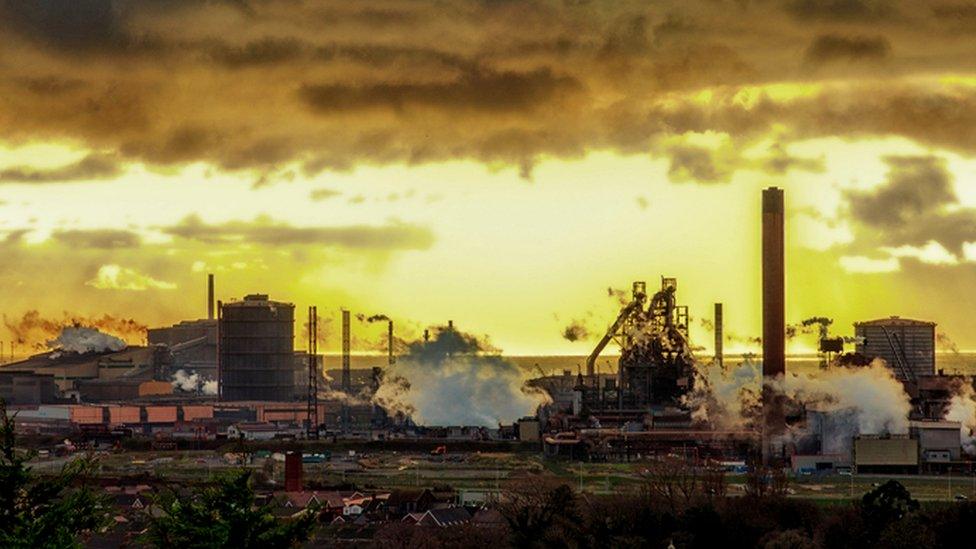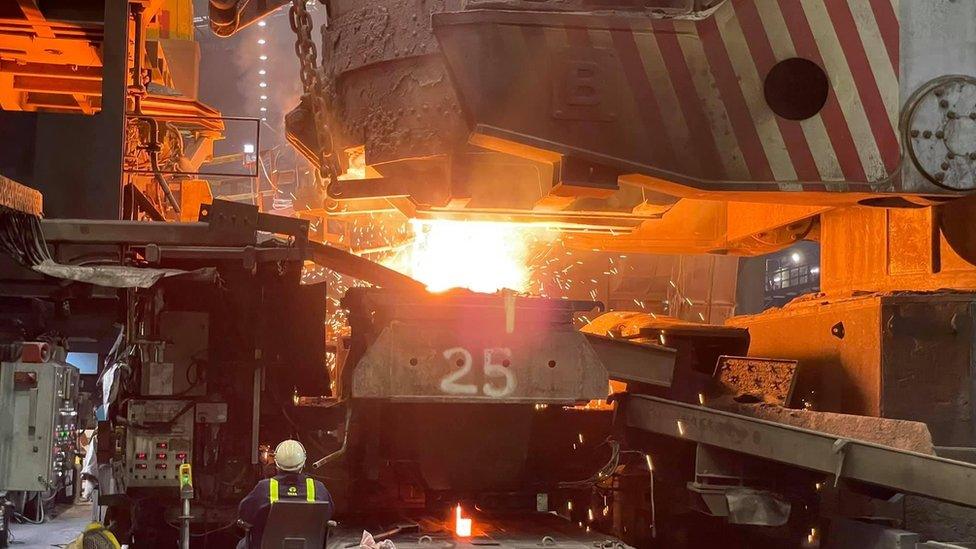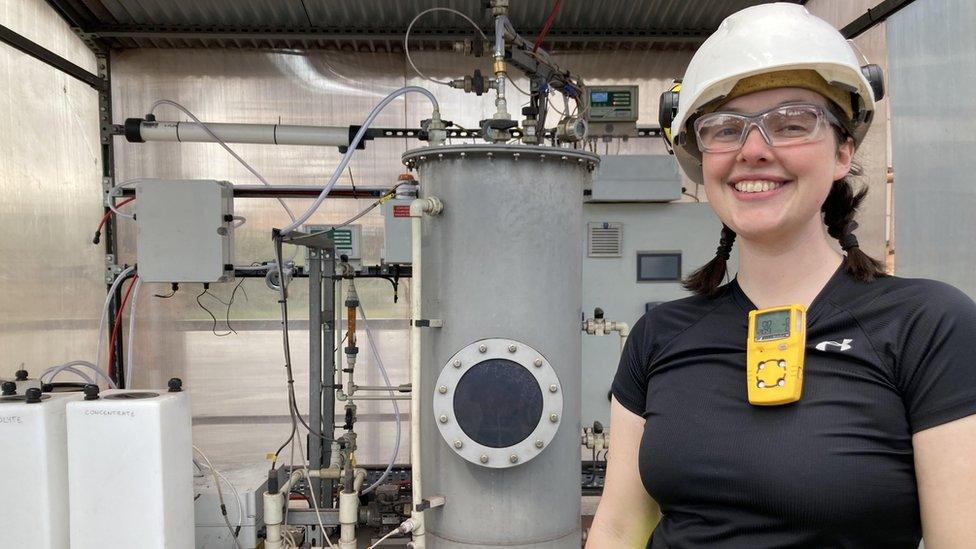Tata Steel: Welsh steel used to develop floating wind farms
- Published

The proposals would mean safeguarding the future of jobs at Port Talbot Steelworks which has seen job losses in recent years
The electricity generator RWE is working with Tata to use Welsh steel as part of its development of floating offshore wind farms.
The project would safeguard the future of jobs at Port Talbot steelworks and at Llanwern, Newport.
Both steelworks have seen job losses in recent years.
A number of companies have been working on plans to build floating wind farms about 40 miles (65km) off the south-west coast of Wales.
The Crown Estate, which looks after the seabed, is opening up areas of the Celtic Sea, so enough electricity for four million homes can be generated from wind farms tethered there.
If RWE's proposals are given the go ahead, it would use part of this to make an offshore wind farm which could produce enough electricity for 1.3 million homes.
The company would work with Tata Steel to build the massive floatation devices from steel produced in Port Talbot and made into steel plates at Llanwern.

Tom Glover, from RWE, said the offshore windfarms will not only maintain jobs, but grow jobs in the steel industry in Wales
"Because the sea is so deep we actually float the turbines on top of the sea," said Tom Glover of RWE.
Steel is a vital component, and RWE and Tata Steel are working together to make a new style floatation tank that will be lighter and produced in Wales.
"Not only will the offshore windfarms themselves create good jobs, building locally and providing steel locally gives the potential that it doesn't just maintain jobs in steel, but grow jobs in steel in Wales," added Mr Glover.
The steel industry has been through a series of job losses in recent years and there has been concern about how many more jobs might go and whether more plants might close.
But it appears that might have changed.
"Steel making in the UK played an integral role in supporting the acceleration of the industrial revolution in the late 19th Century," said Anil Jhanji, chief commercial officer for Tata Steel UK.
"The industry once again will play its part in driving the UK through the green industrial revolution."

RWE and Tata Steel would work together to make a new style flotation tank
Most of the decarbonisation projects across industries involve using steel, whether for the foundations or masts for wind farms, the stands for solar panels or building new nuclear power stations.
It means large quantities of steel will be needed for decades.
Tata Steel is the biggest emitter of CO2 (carbon dioxide) in the UK, and has committed to producing Net Zero steel by 2050.
In the meantime, its products form the heart of the renewable energy industry, after so many job losses in the past a whole new era for the steel industry is beginning.
The next challenge is to decarbonise the way that steel is produced and make what is known as green steel.
One way of reducing carbon emissions is by using renewable energy, so Tata could, in turn, become a customer of RWE, using its renewable energy to create low-carbon or green steel.
- Published5 May 2022

- Published18 March 2022

- Published25 October 2021
